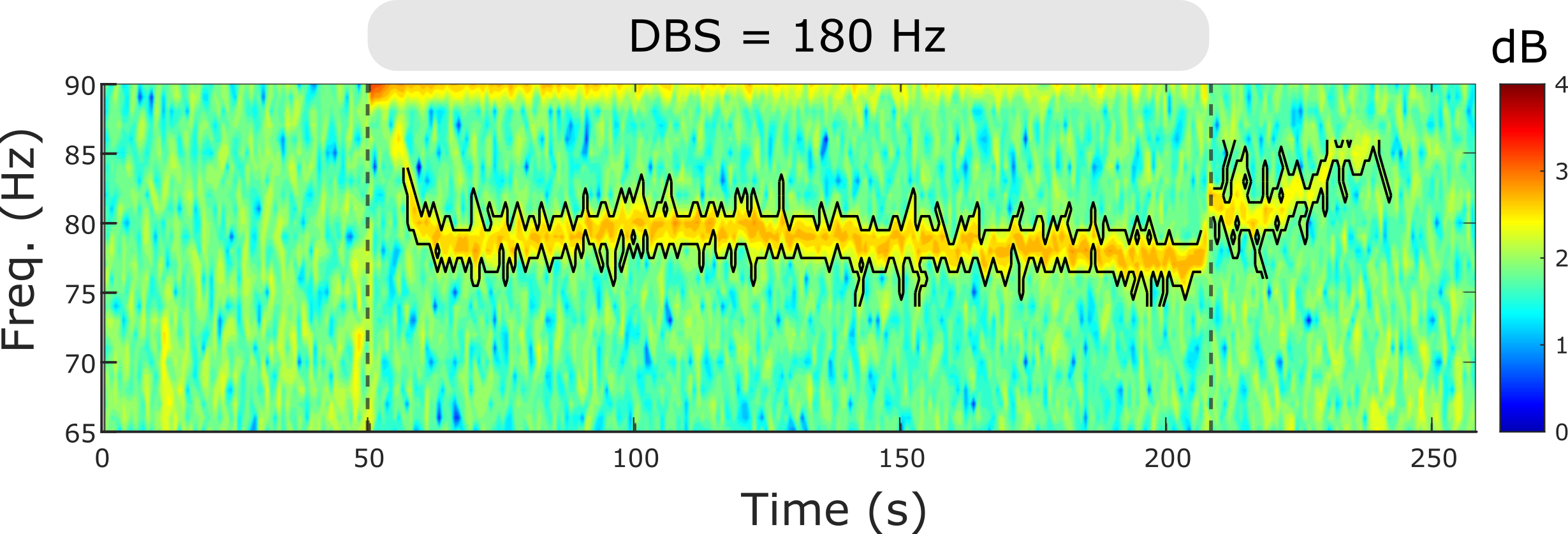Subthalamic deep brain stimulation induces finely-tuned gamma oscillations in the absence of levodopa.
Fast waves of nerve cell activity called ‘FTG oscillations’ can be recorded in the brains of people with Parkinson’s. FTG oscillations have previously been associated with involuntary movements caused by levodopa treatment. Here, we show that FTG oscillations can also occur without levodopa, hence challenging the existing view on this brain activity.
Finely-tuned gamma (FTG) oscillations can be recorded from cortex or the subthalamic nucleus (STN) in patients with Parkinson's disease (PD) on dopaminergic medication, and have been associated with dyskinesias. When recorded during deep brain stimulation (DBS) on medication the FTG is entrained to half the stimulation frequency. We investigated whether these characteristics are shared off medication by recording local field potentials (LFP) from the STN from externalised DBS leads in 14 PD patients after overnight withdrawal of medication. FTG was induced de-novo by DBS in the absence of dyskinesias in a third of our cohort. The FTG could outlast stimulation or arise only after DBS ceased. FTG frequencies decreased during and across consecutive DBS blocks, but did not shift with changing stimulation frequency off medication. Together with the sustained after-effects this argues against simple entrainment by DBS in the off medication state. We also found significant coherence between STN-LFP and electroencephalogram (EEG) signals at FTG frequencies. We conclude that FTG is a network phenomenon that behaves differently in the off medication state, when it is neither associated with dyskinesias nor susceptible to entrainment.

2022. Exp Neurol, 351:113999.
2022. NPJ Parkinsons Dis, 8(1):88.